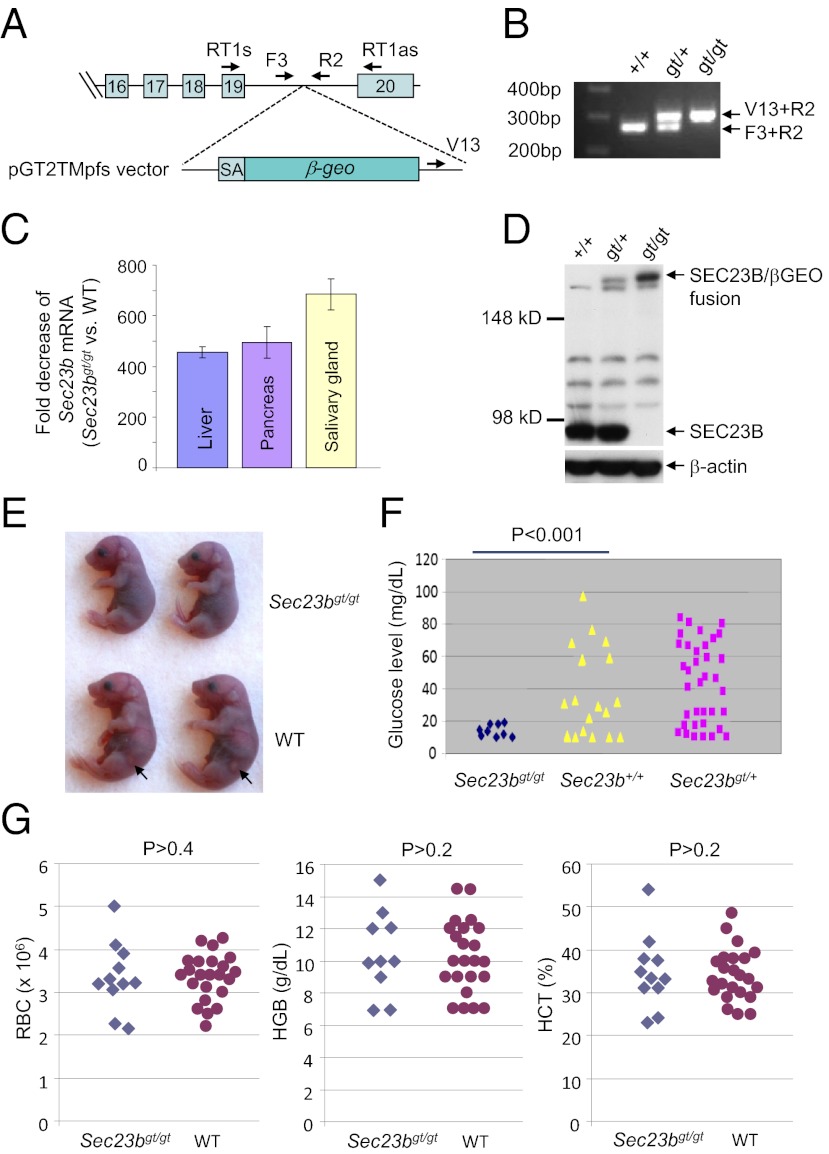Fig. 1.
Generation of SEC23B-deficient mice. (A) Insertion of the gene-trap cassette within intron 19 of the Sec23b genomic locus results in a cDNA fusion of the first 19 exons with the β-Geo gene from the gene-trap vector (pGT2TMpfs). Locations of the RT-PCR and genotyping primers are indicated. SA, splice acceptor. (B) A three-primer genotyping assay distinguishes all three genotypes. Locations of the genotyping primer sequences are indicated in Fig. S1 and A. (C) Real-time RT-PCR analysis of Sec23b mRNA from total RNA prepared from liver, pancreas, and salivary glands of three E14.5 embryos of each genotype. The fold decreases in Sec23bgt/gt vs. WT mice are plotted. gt, gene trap. Error bars represent SDs. (D) Western blot analysis demonstrating the absence of WT SEC23B protein from Sec23bgt/gt MEFs and the presence of SEC23B/βGEO fusion protein by using a SEC23B-specific antibody. (E) Sec23bgt/gt neonates are consistently smaller than their WT littermates. Arrows denote the pancreatic tissue visible from the left side of WT pups but not evident in Sec23bgt/gt pups. (F) Blood glucose levels in WT, Sec23bgt/+, and Sec23bgt/gt pups. Results were obtained from natural or cesarean section-born pups that were fasted for 4 to 8 h before testing. (G) Normal peripheral blood counts in Sec23bgt/gt mice. Red blood cell (RBC) count and hemoglobin (HGB) and hematocrit (HCT) levels are not significantly different between WT and Sec23bgt/gt pups.

